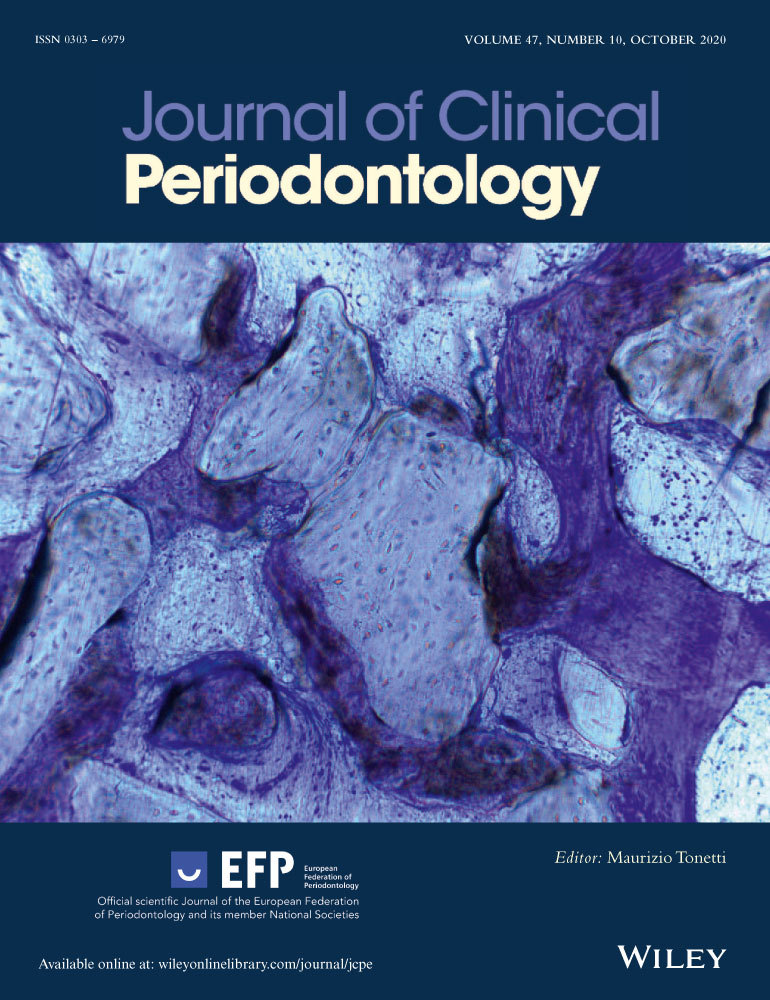Feasibility and needs for simultaneous or staged bone augmentation to place prosthetically guided dental implants after extraction or exfoliation of first molars due to severe periodontitis
Funding information
This study was supported by the University of Hong Kong Periodontal Research Fund. Melissa Fok is the recipient of a Hong Kong postgraduate research fellowship.
Abstract
Background
The aim of this study was to retrospectively assess bone volumes, healed ridge topography and possibility to plan prosthetically guided implants (PGI) at least 6 months after extraction or exfoliation of first molars as a consequence of terminal periodontitis (EEFMP).
Materials and Methods
45 subjects with stage III-IV periodontitis providing 74 extraction sites (maxillary = 51 and mandibular = 23) were included. The degree of residual periodontal support on each root was assessed by combining periodontal and radiographic data. Digital planning of PGI with 4.8/4.1 mm diameter, 8 mm long, root-form dental implant and need for bone augmentation (BA) were performed using CBCT with a radiographic stent. Possibility of standard implant placement (STANDARD) and need for simultaneous or staged BA were assessed.
Results
Planning PGI placement was possible in all cases. For a 4.8 mm diameter implant, STANDARD was possible in 37.8% of the sites, 33.8% required BA at the time of implant placement, and 28.4% required staged BA before PGI. The use of 4.1 mm rather than 4.8 mm diameter implant allowed STANDARD in an additional 8.1% of cases that originally required simultaneous BA/osteotome sinus floor elevation (OSFE). The level of periodontal bone loss did not predict the complexity of implant placement, but significant differences were observed comparing maxillary with mandibular sites.
Conclusion
PGI planning at sites with first molar loss due to terminal periodontitis is possible but poses great challenge to rehabilitation, often requiring advanced augmentation procedures and sinus augmentation.
CONFLICT OF INTEREST
The authors declare that there is no conflict of interest.




